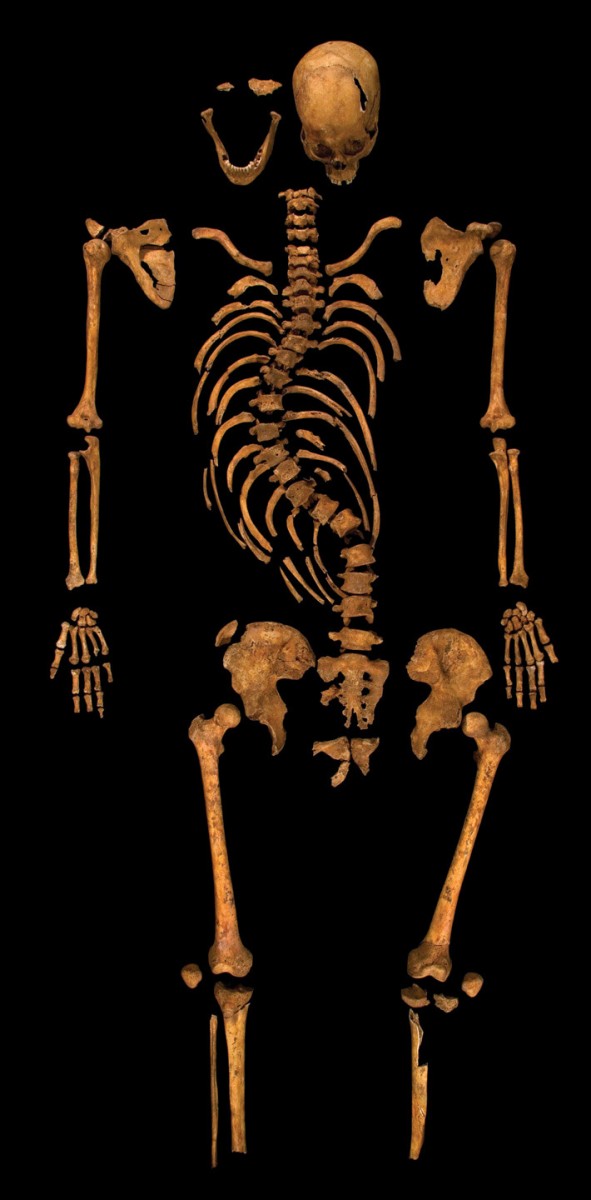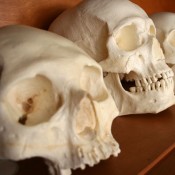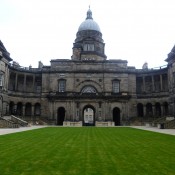A list of the 10 most engaging archaeological discoveries that took place during 2013 was recently presented in the website of “Archaeology”, the official publication of the Archaeological Institute of America. The list, reflecting the interests of the American wider audience -professional archaeologists and informed laypeople- concerning archaeology, is topped by the discovery of King Richard III’s bones in Leicester.
1. The identification of a skeleton found beneath a Leisester parking lot in September 2012, with King Richard III (r. 1483–1485), on February 2013 . The remains were subjected to radiocarbon dating, stable isotope analysis, and detailed osteological examination.All results were consistent with historical accounts, and genetic comparison with two descendants of Richard’s bloodline provided a final verdict. The excavation was led by the University of Leicester Archaeological Services (ULAS) under the supervision of Richard Buckley.
2. Interpreting the Dmanisi human remains as showing the diversity among the Homo erectus hominids. The analysis by paleoanthropologists of a skull dated to 1.8 million years ago, found at the site of Dmanisi in Georgia in 2005, considered together with indications from five more sculls from the same site, indicated that Homo erectus individuals were far more diverse in appearance than many scientists had thought, while all Homo fossils that date to roughly 1.8 to 1.5 million years ago (classified till now as Homo habilis, Homo rudolfensis, and Homo ergaster) likely belonged to a single human species!
3. Unraveling the building complex of the 4th-3rd c. BC., that may represent the earliest instance of Roman monumental architecture in Gabii, Italy.
4. The discovery of the remains of four royal women of the indigenous Wari culture in Castillo de Huarmey, Peru, by Milosz Giersz and a team of archaeologists from the University of Warsaw and the Pontifical Catholic University of Peru. The size of the burial space as well as the richness of goods associated with the women might indicate aspects of matriarchy characterizing the Wari Empire (predecessors of the Incas) around AD. 750.
5. The finding of the earliest bog body in Europe known to-date, by Irish archaeologists in County Laois, Ireland. Dubbed “Cashel Man”, the body predates the former holder of that title by at least 600 years. Cashel Man lived in the Early Bronze Age, around 2000 B.C., and clearly died a violent death. Archaeologist Eamonn Kelly of the National Museum of Ireland believes that Cashel Man’s burial on an ancient regional border, and the nature of his injuries, are evidence that the practice of sacrificing young men—a ritual connected with kingship and sovereignty well known from the Iron Age (500 B.C. to A.D. 400)—is 1,500 years older than previously thought.
6. Identifying North America’s oldest Petroglyphs in Winnemucca Lake, Nevada. According to a team led by University of Colorado paleoclimatologist Larry Benson, the artwork must have been created by Palaeoindians more than 10,000 years ago, before the carvings were submerged beneath the lake’s higher waters. Some of the petroglyphs may represent clouds and lightning, others are diamond- shaped, and there are some patterns that might represent trees. Whatever the inspiration for the carvings, the Pyramid Lake Paiute Tribe, which owns the Winnemucca Lake basin, considers them sacred to this day.
7. Remapping the Khmer Empire in Cambodia. Using new technology, scientists are now able to define that Khmer cities and temple complexes were not enclosed spaces with walls or moats surrounding gridded “downtowns”, but cilty planning grids extended beyond the fortifications, creating much bigger urban landscapes.The findings lend support to the theory that Angkor fell because it grew beyond its means.
8. Finding that the first colonists in America, living in Jamestown, Virginia, had probably performed cannibalism.
9. Defining the world’s oldest port in Wadi el-Jarf, near the Red Sea in Egypt, where archaeologists discovered fragments of boats, ropes, and pottery. According to expedition leader Pierre Tallet (University of Paris-Sorbonne), the artifacts found there -including the remains of an L-shaped jetty, limestone anchors from numerous large ships and 10 very well-preserved papyri- date to the reign of the 4th Dynasty King Khufu, builder of the Great Pyramid.
10. Animal archaeologists! In Cumbria, England, burrowing moles have pushed up ancient objects at second-century Whitley Castle, uncovering invaluable evidence of Roman life at the for, while in northern Germany, a badger discovered nine remarkable 900-year-old burials, including that of a richly outfitted warrior. Such discoveries would never have happened if animals had not been involved as humans could never have access in such sites.




